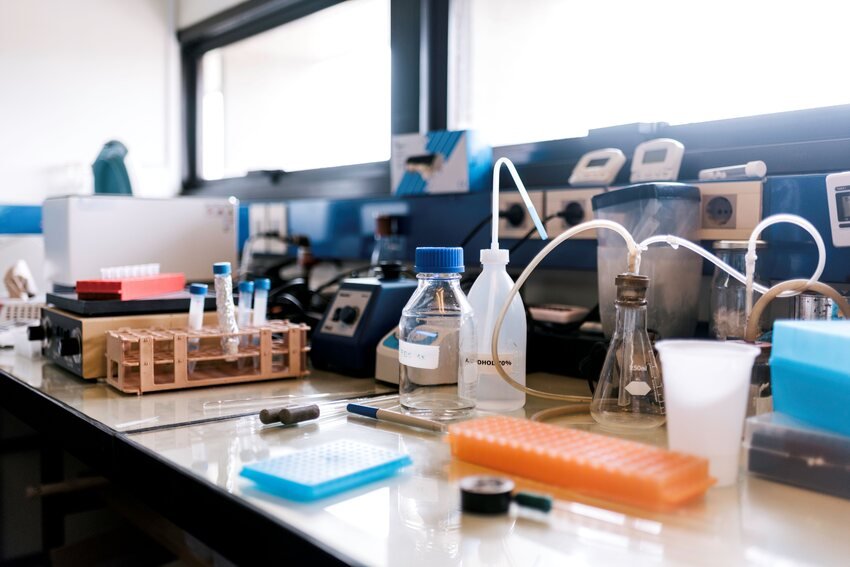In today’s global economy, laboratories are under more pressure than ever.
From food to pharmaceuticals to cosmetics, the demand is clear: deliver results faster, more accurately, and with complete transparency. Consumers expect safety and performance; regulators expect airtight data trails. Caught in the middle are the labs themselves, where every pipette, sensor, and vial plays a role in shaping trust.
What’s emerging is a new era of laboratory materials — defined by automation, precision, and traceability. This shift is not just about buying new tools but rethinking how research and quality control are conducted.
Why Laboratories Need a New Approach
The stakes have never been higher. Global regulations grow stricter each year, while competition pushes companies to bring products to market in record time. In pharmaceuticals, delays can mean lost billions. In food and cosmetics, a single quality control failure can erode consumer trust overnight.
Yet many labs still rely on manual processes that were designed decades ago. Handwritten logs, repetitive pipetting, or fragmented data systems slow down workflows and introduce errors. It’s here that companies like Quimivita, a trusted laboratory material supplier, are helping research facilities upgrade to meet today’s demands with smarter, more integrated solutions.
Automation as the Backbone of Modern Labs
Automation is no longer a luxury; it is the foundation of the modern laboratory. Robotic arms prepare samples, automated pipettes deliver consistent volumes, and mixing systems ensure identical conditions across hundreds of test runs. The impact is profound: reduced human error, higher throughput, and results that can be reproduced at scale.
In pharmaceutical clinical trials, automation allows labs to handle thousands of samples with uniform accuracy. In food quality testing, it ensures contaminants are detected quickly and reliably before products reach shelves. By handling the repetitive groundwork, automation frees researchers to focus on higher-level analysis and innovation.
Precision Tools Pushing Boundaries
Alongside automation, the drive for precision has reshaped the tools at the bench. High-resolution imaging systems capture cellular behavior in unprecedented detail. Advanced chromatography and spectroscopy allow for the separation and identification of compounds at microscopic levels. These technologies aren’t just incremental upgrades — they enable discoveries that would have been impossible even a decade ago.
Consider product development in cosmetics, where the feel of a cream or the stability of a serum depends on subtle interactions at the molecular surface. Technologies like Kyowa highlight how advanced measurement of surface tension and friction supports the design of next-generation formulations. The same principles apply in food integrity testing and drug discovery, where precision can determine both safety and success.
Traceability and Digital Integration
Automation and accuracy might make lab data more reliable, but without traceability, that data lacks credibility. Today’s laboratories are embracing digital technologies, including Laboratory Information Management Systems (LIMS) that track every sample, blockchain platforms that verify its authenticity, and data-sharing platforms that gather real-time information from IoT-connected instruments.
In pharmaceuticals, traceability guarantees FDA and EMA compliance on data audit trails. When it comes to food safety, auditors will need to be able to trace their way back through the supply chain, from supermarket shelves to raw materials. By verifying that everything is precisely and accurately recorded and that all conditions are auditable, digital platforms enable regulators to monitor these developments closely.
Looking Forward — Tomorrow’s Lab Materials
But this is just the beginning as far as lab materials go. Lab-on-a-chip systems will eventually put entire labs’ worth of kit onto a chip that anyone can carry in their pocket. Biotech cilium-based reagents will provide high levels of purity and efficiency, all without the need for toxic chemicals. And even simple consumables will be making an impact as sustainable plastic use and energy efficiency become part of a lab’s, and by extension, a pharma company’s USP.
For professional labs, this means that the time and place for pure performance with no responsibility is rapidly coming to an end. Companies such as Quimivita are already stepping up to the plate, breaking ground on new innovations to help pharma and other industries find ways of reconciling powerful operations with sustainable responsibility.
Final Thoughts
Labs are stepping into a new era where speed, accuracy, and traceability are inextricably linked. The labs of the future will not only test more effectively; they will quantify and operate smarter, cleaner, and more accountable for the populations they serve.
Read Dive is a leading technology blog focusing on different domains like Blockchain, AI, Chatbot, Fintech, Health Tech, Software Development and Testing. For guest blogging, please feel free to contact at readdive@gmail.com.





